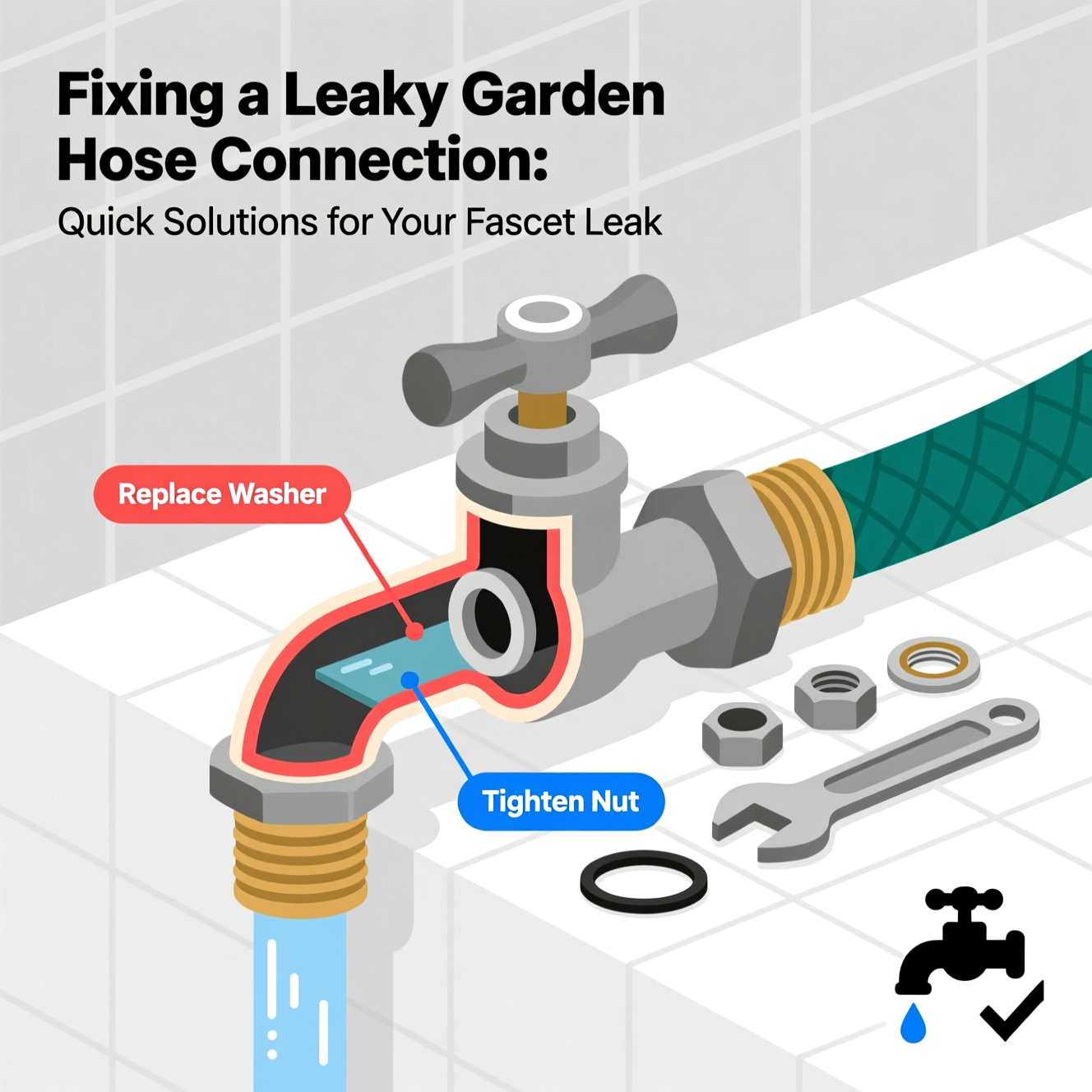Why is My Brand New Garden Hose Leaking at the Faucet?
Even a new garden hose can leak at the faucet connection. A missing or damaged hose washer is often the primary cause. This small rubber or silicone O-ring ensures a complete seal at the faucet outlet. Without it, water will escape, leading to that frustrating spray. For most gardeners, checking this simple component resolves the issue.
A worn or absent hose washer can result in up to 5 gallons of water wasted per hour. The faucet threads themselves must also be clean and free of damage. Ensure a snug, but not overtight, connection using the hose’s compression fitting. Over-tightening can deform the washer, creating its own leak. Experts emphasize the importance of a proper seal for efficient watering.
In summary, a leak from a new garden hose connection at the faucet typically stems from a simple component. This often involves the hose washer or the integrity of the faucet threads. Verifying the washer’s presence and condition, and ensuring a secure compression fitting, are key steps to stop water spraying from the hose connection.
What’s the First Step to Fixing a Leaking Hose Connector?
The immediate action for a leaky hose faucet connection is to stop the water flow. Always turn off the water supply at the faucet. Then, carefully disconnect the garden hose from the faucet. This initial disconnection is key to resolving most issues quickly.
Inspect the connection thoroughly. Look for any obvious damage or debris on both the faucet threads and the hose connector. Promptly addressing leaks can prevent soil erosion and reduce water bills by an average of 10% annually. Understanding the basic connection mechanics is vital.
How Can I Replace a Missing or Damaged Hose Washer?
Replacing a missing or damaged hose washer is a simple yet vital repair. This small rubber gasket creates a watertight seal at your garden hose connection. Addressing a leaky hose end often begins with this critical component. For most gardeners, this fix stops drips and conserves water.
Hose washers are typically standard-sized rubber or silicone rings. These are designed to create a watertight seal. You can purchase replacements at any hardware store for under a dollar. Replacing a faulty hose washer is a DIY fix that resolves over 60% of common garden hose leaks. Ensure the new washer is seated correctly within the hose connector’s recess; a snug fit is crucial for an effective seal.
What If the Hose Washer Isn’t the Problem? Checking Other Causes
When persistent leaks plague your garden hose, look beyond the washer. A faulty hose coupling or a worn faucet valve can be the true culprit. Inspect the hose coupling for visible cracks or bent threads, which prevent a secure seal. These issues can mimic a bad hose fitting, even with a new washer. For most gardeners, this is a crucial next step.
Furthermore, the faucet itself warrants close examination. Signs of wear or damage around the spigot outlet can cause leaks. Even a slightly misaligned faucet valve can create ongoing drips. Experts note that damage to the hose’s coupling itself accounts for a significant portion of persistent leaks. In practical terms, faucets left on with a leaking hose can waste up to 100 gallons of water weekly, highlighting the need for thorough inspection.
Can I Use Sealants or Tape to Fix a Leaking Hose Connection?
While seeking to seal a leaky hose fitting, some gardeners consider sealants or tape. Plumber’s tape, also known as Teflon tape, can sometimes help with minor leaks on threads. However, it’s typically not effective for the main seal where the washer sits. This is because it can interfere with the gasket’s proper fit, preventing a secure seal.
For a cracked fitting, products like Flex Seal spray might offer a temporary solution. These sprays can create a barrier against water. However, they are not considered long-term horticultural solutions. In practical terms, improper use of sealants on garden hoses can void manufacturer warranties and potentially lead to more significant damage over time.
Plumbing professionals generally advise against using general sealants on dynamic water connections like garden hoses. These connections experience pressure and movement, which compromise the integrity of sealant applications. For most gardeners, addressing the leak with a replacement part or a specialized hose repair kit ensures a more reliable and durable fix.

Tyler Grant runs our Tools & DIY testing lab, putting pruners, hoses, drip kits, and raised-bed systems through real-garden use. He documents builds, timings, and durability to deliver honest pros/cons and clear recommendations across budgets. Tyler’s guides include safety callouts, maintenance checklists, and step photos you can follow in a weekend.

